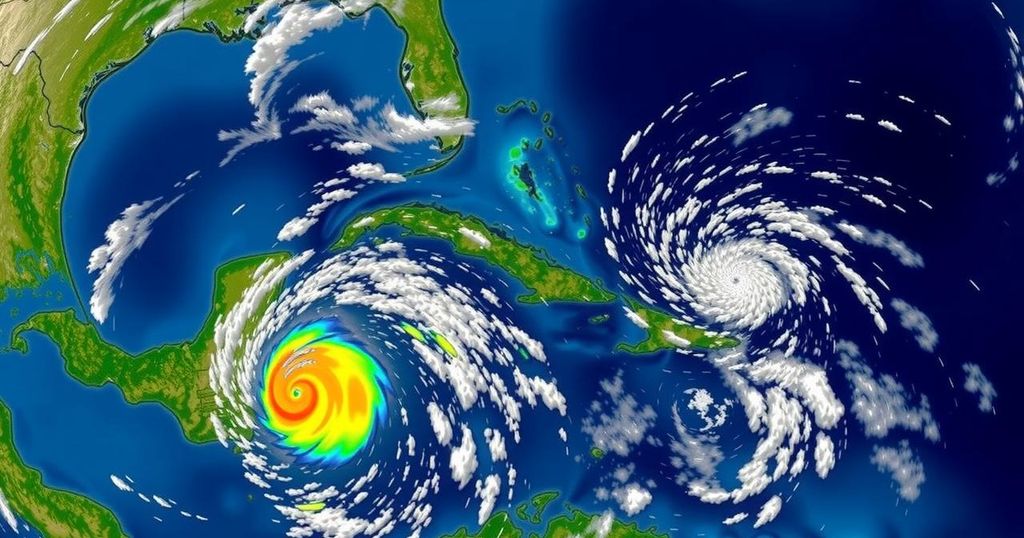2024 Hurricane Season Concludes with Unprecedented Storm Activity

The 2024 hurricane season ended with 18 named storms, including 11 hurricanes, with 5 classified as major. The season showcased unusual storm behaviors and patterns, notably Hurricane Beryl’s rapid intensification. Significant impacts included flooding and deaths from Hurricane Helene, the deadliest storm since 2005. The Pacific also experienced 11 named storms this season, reflecting the widespread extremity of hurricane patterns associated with climate change.
The 2024 hurricane season concluded on November 30 with a total of 18 named storms, which included 11 hurricanes, five of which were classified as major hurricanes with a rating of Category 3 or above. While the average figures for a hurricane season typically range around 14 named storms and seven hurricanes, this season’s activity diverged significantly, showcasing unusual patterns and behaviors among the storms. The season opened on June 1 with Tropical Storm Alberto as the first named storm and closed with Tropical Storm Sara, which formed on November 14.
Prominent storms during the season included Hurricane Beryl, which rapidly intensified from a tropical storm to Category 5 within just 14 hours, marking the earliest instance of such intensity recorded. Despite causing extensive damage, the overall mortality was lower thanks to improvements in early warning systems. Following Beryl, Hurricane Debby and other storms caused significant impacts, including flooding and casualties, particularly from Hurricane Helene, which was notable for resulting in 103 confirmed fatalities in North Carolina, the deadliest hurricane since Katrina.
In the Pacific, a total of 11 named storms were recorded, including four hurricanes, illustrating the widespread nature of severe weather events this season, which coincided with expert assessments of the growing impact of climate change on storm frequency and intensity. The 2024 hurricane season thus emerged as a year characterized by significant anomalies, underscoring the ongoing challenges posed by climate-related phenomena and their necessity for improved forecasting and preparedness.
The annual hurricane season is a critical period in which meteorologists monitor tropical weather systems, particularly in the Atlantic and Pacific Oceans, as these systems can lead to dangerous and destructive storms. The 2024 season revealed patterns that deviated from expected averages, with notable rapid intensifications and timing anomalies for system formations. Researchers are increasingly linking the severity and variability of storms to climate change, raising concerns about future seasons and the need for advanced planning and early warning measures to mitigate risks.
In summary, the 2024 hurricane season was marked by a total of 18 named storms and 11 hurricanes, highlighting significant deviations from historical averages in terms of behavior and intensity. Despite the destructive nature of several storms, advancements in early warning systems played a crucial role in reducing fatalities. As climate change continues to exert pressure on weather patterns, the need for enhanced forecasting and community preparedness remains imperative.
Original Source: www.upi.com







